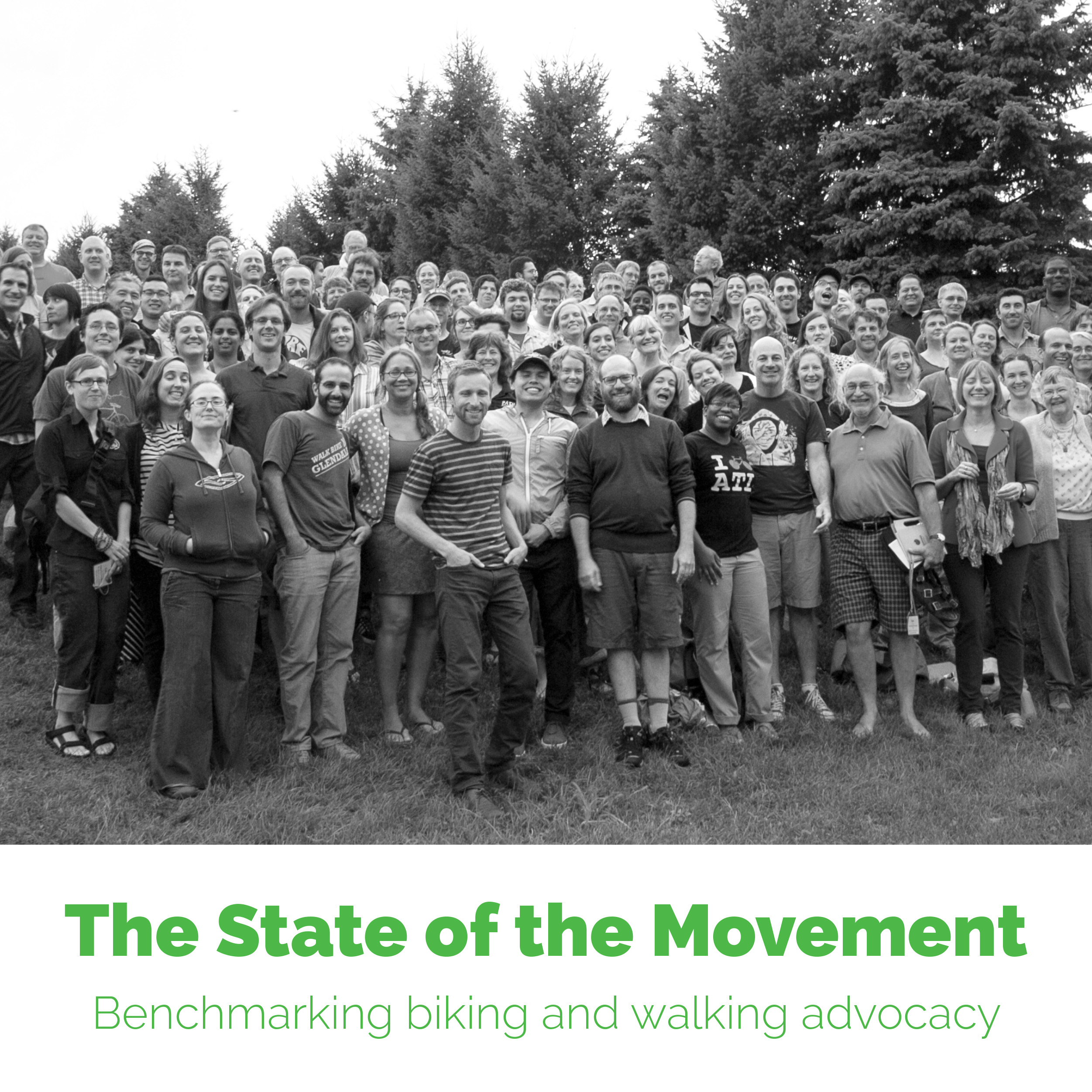 There’s no doubt: The bike/walk movement is gaining momentum, but we still face significant obstacles. So in our State of the Movement report, we asked Alliance member organizations to share what challenges they're facing in their work. We found that our movement has some similar — and distinct — difficulties compared to the nonprofit sector at large and identified the top 10 most reported hurdles facing walk/bike organizations.
There’s no doubt: The bike/walk movement is gaining momentum, but we still face significant obstacles. So in our State of the Movement report, we asked Alliance member organizations to share what challenges they're facing in their work. We found that our movement has some similar — and distinct — difficulties compared to the nonprofit sector at large and identified the top 10 most reported hurdles facing walk/bike organizations.
Challenges by size
Large organizations (10 or more employees) struggle the most with the lack of political will. Not having a mayor or local leader on board was the most frequently cited challenge. Additionally, large groups noted the difficulty in coordinating multiple agencies working on the same issues; “too many cooks in the kitchen” without a point person or clear structure. Members also mentioned insufficient dedicated city or state funding.
Meanwhile, small organizations find funding opportunities and staffing constraints to be their largest hurdles. Many also reported difficulties transitioning out of the all-volunteer phase when additional funding was available — specifically, learning how to cooperate efficiently when staff expansions occur.
Many of these challenges are not unique to the bike/walk movement. A recent report from the Nonprofit Finance Fund identified similar organizational concerns regarding funding (specifically long term sustainability and finding complete funding for projects), meeting community demand, struggling with community engagement, insufficient staff and managing/pursuing growth.
The report however highlighted staff retention as the second largest challenge in the overall nonprofit sector, which was not mentioned among bike/walk organizations. Additionally issues with board participation were not significant concerns for the nonprofit sector, whereas they were the most common response in bike/walk behind funding and staff needs.
Top 10 Reported Challenges
According to our State of the Movement survey, the following challenges were the most reported among Alliance organizations.
- Funding: Lack of funding or a funding mismatch, with grants only available for local level projects instead of state (or vice versa); sharing funding pools with other interests, such as public health; and attracting individual donors for bicycling and walking
- Staff capacity: Trying to tackle too many projects and stretching organization too thin for effective engagement
- Board involvement: Lack of adequate board activity, or disagreement between staff and board on strategy
- Multiple agency coordination: In some jurisdictions, organizations are challenged by too many agencies involved in any particular project, without a central leader or point person
- Political leadership: Lack of a political champion or sense of urgency around issues like land use, i.e. road safety not a flashy issue
- Social inertia: Struggling to galvanize a cultural change prioritizing a landscape made for active transportation.
- Media attention: Insufficient or negative media coverage of bicycling and walking.
- Geography: Trying to cover too large of a geographic area, with insufficient resources to meaningfully engage with distant, diverse populations
- Volunteer issues: Struggle to effectively coordinate help, hold volunteers accountable, keep them engaged long-term, and find a champion in every neighborhood
- Streetscape conflicts: Resistance to parking and traffic lane removal and bikelash

